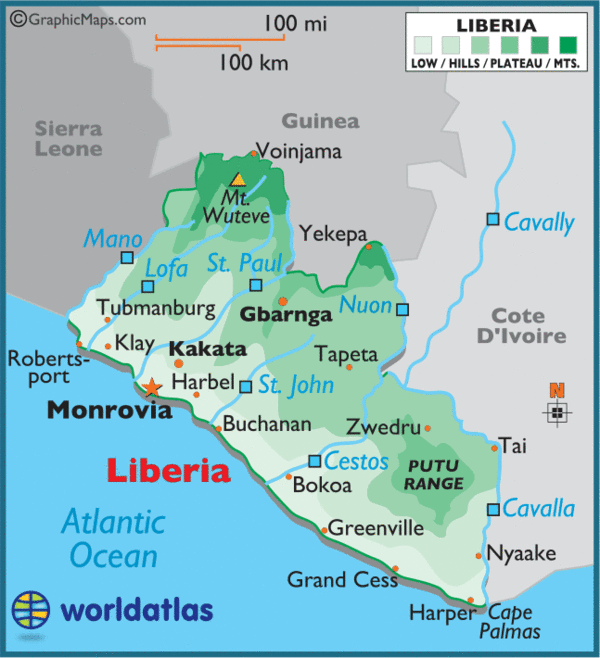Liberia - the country

The Republic of Liberia is a state in West Africa on the Atlantic coast. It borders onto the Ivory Coast, Guinea and Sierra Leone. Liberia lies predominantly in the tropical zone with rain forests, the majority of which has been cleared. The interior of Liberia consists mainly of mountainous terrain. The highest point is Mount Wuteve (1,400 m) in the north of the country.
According to the preliminary results of a census in 2008, there are currently 3,489,072 people living in Liberia.
The population growth rate is 2.1 percent per annum. The Republic of Liberia was part of a project since 1821 for the settlement of former Afro-American slaves from the United States. Liberia had already achieved independence by 1847. Despite this model status of an African society as nation of self-determination, the country was characterized by conflicts between the descendants of former Afro-American slaves and long-established ethnic groups. From 1989 to 2013, Liberia was in a state of military-based civil war which had a counter-productive effect on overall development.
After more than ten years in a state of war, it was possible to at least reach a peace agreement.
Finally, in November 2005, the first free elections were held which have led to a change in the political landscape. Many of the social and political transformations required to achieve a market-oriented, socially fair and democratic society, however, continue to be in the starting blocks. These include a public health system that is capable of achieving the various needs of the very heterogeneous and impoverished population.
Sources for the more recent history of Liberia:
http://liportal.giz.de/liberia/geschichte-staat/
Healthcare
Basic healthcare was already insufficient even before the start of the civil war. According to currently available findings*, it is estimated that
- less than 10 percent of Liberians have access to medical care; prior to the civil war it was 30 percent
- the “under five-years of age” mortality rate (among 1,000 live births) is 110 deaths; the infant mortality rate (among 1,000 live births) is 71 deaths and the mother mortality rate (among 100,000 live births) is 994 deaths
- infectious/communicable diseases such as malaria**, diarrhoea, acute respiratory infections and measles are the main cause of sickness and death. 36 percent of all diseases and 10 percent of all deaths are the result of catching malaria
- HIV frequency among adults (between 15 and 49 years of age) is at 1.5 percent
- HIV frequency among young females and males (between 15 and 24 years) is at 0.5 and 1.6 percent respectively
- HIV frequency among pregnant women is 5.4 percent
According to information provided by the Ministry of Health and Social Welfare, there are approx. 50 doctors available for a population of 3.5 million.
It is in this development sector that GERLIB CLINIC has started its local projects: Primarily, the object is to offer medical services for particularly impoverished sectors of the population in Paynesville, a suburb of the city of Monrovia. In addition, elementary knowledge of hygiene and health care will be conveyed. GERLIB CLINIC also offers the possibility of training local qualified personnel.
Sources:
- Report by the United Nations/ World Bank/ National Transitional Government of Liberia: Joint Needs Assessment, February 2004
- Liberia Demographic and Health Survey 2007.
For further information on malarial diseases, see: www.who.int/topics/malaria/en/
